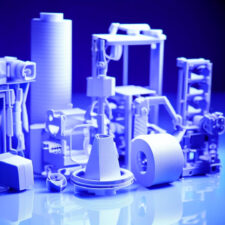3D printing is the process of creating three-dimensional objects from a digital file by laying down successive layers of material until the object is formed. The technology behind 3D printing is rapidly advancing and has opened up many possibilities for creating unique, customized products.
In this article, we will explore the world of 3D printed products and how they are changing the way we design and manufacture goods.
What are 3D Printed Products?
3D printed products are items that have been created through the process of 3D printing. These products can range from simple objects such as keychains and phone cases to complex items such as prosthetic limbs and aerospace components.
One of the major benefits of 3D printing is the ability to create highly customized products. By using digital models and computer-aided design software, designers can create products that are tailored to specific individual needs.
Advantages of 3D Printing
There are many advantages to using 3D printing technology to create products. Some of the most significant benefits include:
Increased Customization
3D printing allows for the creation of highly customized products that can be tailored to individual needs. This is particularly useful in areas such as medicine, where prosthetics and implants can be designed to fit a specific patient's body.
Reduced Costs
Traditional manufacturing processes often require expensive tooling and equipment. With 3D printing, the cost of creating a product is significantly reduced, as there is no need for special tooling or molds. This makes it possible to create low-volume, high-value products without incurring significant costs.
Faster Time to Market
With traditional manufacturing processes, it can take weeks or even months to go from design to finished product. 3D printing allows for much faster turnaround times, as products can be printed and tested in a matter of hours or days.
Applications of 3D Printing
The applications of 3D printing are vast and varied. Some of the most promising areas of application include:
Medicine
3D printing is already being used in the field of medicine to create prosthetics, implants, and surgical tools. In the future, it may be possible to use 3D printing to create entire organs for transplant.
Aerospace
The aerospace industry is using 3D printing to create lightweight, high-strength components for use in aircraft and spacecraft. This technology has the potential to revolutionize the design and manufacture of aerospace components.
Architecture
3D printing is being used in architecture to create complex building components that would be difficult or impossible to create using traditional manufacturing methods. This technology allows architects to create highly customized, intricate designs.
Challenges of 3D Printing
While 3D printing has many advantages, there are also some challenges that must be overcome. Some of the most significant challenges include:
Quality Control
3D printed products can vary in quality depending on the materials and the printer used. Ensuring consistent quality can be a challenge, particularly for complex products.
Intellectual Property Issues
With the ability to easily replicate products, 3D printing raises concerns about intellectual property rights. It can be difficult to prevent unauthorized copying of designs and products.
Material Limitations
Not all materials can be easily 3D printed. While the range of printable materials is expanding, there are still some limitations on what can be created.
Conclusion
3D printing technology has opened up a world of possibilities for creating unique, customized products. From personalized prosthetics to complex aerospace components, 3D printing is changing the way we design and manufacture goods.
While there are still challenges to overcome, the benefits of 3D printing are clear. As the technology continues to advance, we can expect to see even more innovative uses for 3D printed products in the future.

